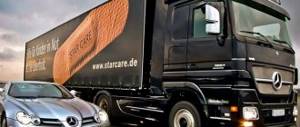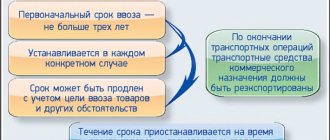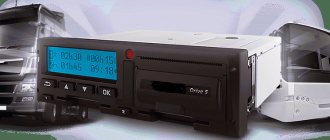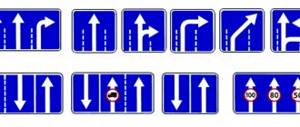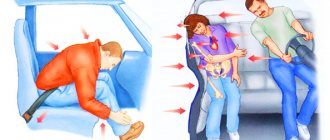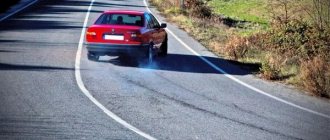Good afternoon, dear reader.
In 2021, the technical regulations of the Customs Union on the safety of wheeled vehicles will be applied in Russia. This regulatory document contains requirements for the technical condition of vehicles. Compliance with these requirements is also verified during a technical inspection of the vehicle.
The technical regulations of the customs union came into force quite a long time ago, but not every driver had to deal with them. The peculiarity of the regulation is that it uses special categories of vehicles that have not previously been found in regulatory legal documents.
This article will discuss the categories of vehicles in the regulations, as well as the vehicles to which these categories relate:
- Table of categories in technical regulations.
- Motorized vehicles: Mopeds, motorbikes, mokicks.
- Motorcycles, scooters, tricycles.
- Quadricycles.
- Passenger cars.
Table of categories in technical regulations
| Category of technical regulations | Decoding |
| L1-L2 | Mopeds, motorbikes, mokikis |
| L3-L5 | Motorcycles, scooters, tricycles |
| L6-L7 | Quadricycles |
| M1 | Passenger cars |
| M2-M3 | Buses, trolleybuses, specialized passenger vehicles |
| N1-N3 | Trucks |
| O1-O4 | Trailers |
Main types of vehicles
A vehicle is a special device that is designed to transport goods and people over relatively long distances along roads.
Motor transport is usually classified according to different criteria, so many types can be distinguished. But the Traffic Rules use the following classification:
- Motor vehicles
- Non-motorized vehicles
Non-mechanical transport differs from mechanical transport in the absence of a motor that would set them in motion. In such devices, the motor is replaced by muscles or vehicles.
Non-mechanical ones include:
- Moped – driven by an engine;
- Trailer (towed) is a secondary component of the main vehicle;
- A bicycle is a vehicle that moves with the help of human efforts;
- A horse-drawn cart is a type of transport that begins to move with the physical efforts of the animal.
Motor vehicles
Mopeds, motorbikes, mokikis
Category L1 - Two-wheeled vehicles whose maximum design speed does not exceed 50 km/h and characterized by:
- in the case of an internal combustion engine - with an engine displacement not exceeding 50 cm3, or
- in the case of an electric motor - rated maximum power in continuous load mode, not exceeding 4 kW.
Category L2 - Three-wheeled vehicles with any wheel arrangement, the maximum design speed of which does not exceed 50 km/h, and characterized by:
- in the case of an internal combustion engine with forced ignition - an engine displacement not exceeding 50 cm3, or
- in the case of another type of internal combustion engine - a maximum effective power not exceeding 4 kW, or
- in the case of an electric motor - rated maximum power in continuous load mode, not exceeding 4 kW.
With scooters the situation is quite simple:
- If the scooter has 2 wheels, then it belongs to category L1.
- If the scooter has 3 wheels, then it belongs to category L2.
Thus, categories L1-L2 correspond to motor vehicles, which require a driver’s license of category M to drive.
Motorcycles, scooters, tricycles
Category L3 - Two-wheeled vehicles whose engine displacement (in the case of an internal combustion engine) exceeds 50 cm3 (or) the maximum design speed (for any engine) exceeds 50 km/h.
Category L4 - Three-wheeled vehicles with wheels asymmetrical with respect to the median longitudinal plane, the engine displacement (in the case of an internal combustion engine) exceeds 50 cm3 and (or) the maximum design speed (for any engine) exceeds 50 km/h.
Category L5 - Three-wheeled vehicles with wheels symmetrical with respect to the median longitudinal plane of the vehicle, the engine displacement (in the case of an internal combustion engine) exceeds 50 cm3 and (or) the maximum design speed (for any engine) exceeds 50 km/h .
If the distance between the centers of the contact patches with the road surface of the wheels of one axle is less than 460 mm, such vehicles belong to category L3.
Categories L3-L5 refer to vehicles that require a category A driver's license to drive:
- L3 - two-wheeled motorcycles, as well as three-wheeled motorcycles with a small distance between the wheels on the axle (less than 46 cm);
- L4 - asymmetrical three-wheeled motorcycles (for example, a motorcycle with a sidecar);
- L5 - symmetrical three-wheeled motorcycles (for example, a motorcycle with a body in the center).
Quadricycles
Category L6 - Four-wheeled vehicles whose unladen mass does not exceed 350 kg excluding the mass of batteries (in the case of an electric vehicle), the maximum design speed does not exceed 50 km/h, and characterized by:
- in the case of an internal combustion engine with forced ignition - an engine displacement not exceeding 50 cm3, or
- in the case of another type of internal combustion engine, a maximum effective engine power not exceeding 4 kW, or
- in the case of an electric motor - the rated maximum power of the engine in continuous load mode, not exceeding 4 kW.
Category L7 - Four-wheeled vehicles other than vehicles of category L6, the unladen mass of which does not exceed 400 kg (550 kg for vehicles intended for the carriage of goods) excluding the mass of batteries (in the case of an electric vehicle) and the maximum effective power motor does not exceed 15 kW.
From the point of view of traffic rules, quadricycles of category L6 are mopeds, i.e. to drive them, a category M license is required. More powerful quadricycles of category L7 require subcategory B1 licenses.
The division between categories L6 and L7 is made solely on the basis of engine power. More powerful quadricycles belong to the L7 category.
Vehicle categories for 2021 with explanation
The number of categories and subcategories into which cars are divided increases every year. Today, on the territory of the Russian Federation, the country has the following classification of vehicles according to technical specifications. regulations:
Lx (motor vehicles):
- L1 - 2-wheeled vehicle, unable to accelerate more than 50 km/h and with an engine capacity of less than 50 cc. cm or a power of 4 kW (for products with an electric motor);
- L2 is a vehicle with 3 wheels, with various options for their location. Possible driving speed is 50 km/h. Engine displacement requirements coincide with those of category L1;
- L3 is a two-wheeled vehicle with an engine capacity of 50 cc. cm, which is capable of accelerating at more than 50 km/h;
- L4 - a vehicle with 3 asymmetrical wheels to the middle longitudinal strip, capable of driving faster than 50 km/h. Moreover, its engine capacity exceeds 50 cm³;
Category L - L5 – vehicles with an engine capacity of 50 cubic meters or more. cm, three of the three wheels of which are symmetrical to the central longitudinal plane of the car. Possible speed - from 50 km/h;
- L6 is a four-wheeled car, the weight of which, excluding the weight of batteries, is within 350 kg. Permissible speed is less than 50 km/h. The volume or power of the engine is within the range of 50 cm³ or 4 kW, depending on its type;
- L7 is a vehicle with 4 wheels, the weight of which does not exceed 400 kg or 550 kg, depending on their purpose. Engine power – up to 15 kW.
Mx (car for passengers):
- M1 - passenger cars with a capacity of no more than 8 people, not counting the driver.
- M2 is a vehicle weighing up to 5 tons, accommodating more than 8 people, not counting the driver.
- M3 - passenger cars whose weight exceeds 5 tons, with more than 8 seats, not counting the driver's seat.
Nx (vehicles for freight transport):
- N1 – vehicles whose weight does not exceed 3.5 tons.
- N2 – cars with a technical maximum weight from 3.5 to 12 tons.
- N3 – freight transport, with a technically permissible weight of more than 12 tons.
Oh (trailers):
- O1 - with a permissible weight of up to 0.75 tons.
- O2 - the technical weight of which is in the range of 0.75 - 3.5 tons.
- O3 – weighing from 3.5 to 10 tons.
- O4 – with a maximum technical weight starting from 10 tons.
Important! When choosing a vehicle, you should definitely check whether your existing driver’s license is compatible with it.
You can find out the category of the device directly on its reverse side. But it is important to take into account that there are 2 classifications in force in the country, one of which determines the category of transport vehicle, and the second - the type of transport, and the designations in these classifications differ significantly. For this reason, drivers quite often have difficulty checking the relationship between the type of vehicle and the class of the car.
The comparative table clearly shows the relationship between types of driver's licenses and vehicle classification according to technical regulations.
Passenger vehicles
Passenger cars
Category M1 - Vehicles used for the transport of passengers and having, in addition to the driver's seat, no more than eight seats - passenger cars.
Let's consider category M1, which refers to passenger vehicles. It is this category that will be of interest to most car owners, since category M1 corresponds to category B of a regular driver’s license.
So if you are looking for requirements related to a passenger car in the technical regulations, then you should pay attention exclusively to the items related to the M1 category.
Please note that Category M1 does not include goods vehicles of Category B. These will be discussed below.
Buses, trolleybuses, specialized passenger vehicles
Category M2 - Vehicles used for the transport of passengers, having, in addition to the driver's seat, more than eight seats, the technically permissible maximum weight of which does not exceed 5 tons.
Category M3 - Vehicles used for the transport of passengers, having, in addition to the driver's seat, more than eight seats, the technically permissible maximum mass of which exceeds 5 tons
Passenger buses and trolleybuses, depending on their weight, fall into categories M2 and M3. Thus, categories M2 and M3 correspond to category D of a regular driving license.
In addition, if the bus has from 1 to 8 passenger seats, then the vehicle belongs to category B.
Category "Mx"
Category M includes vehicles that allow the transportation of citizens. They are separated using the following:
- “M1” - the number of passenger seats is no more than eight. Usually this category is in greatest demand among citizens;
- “M2” - the number of passenger seats is more than 8, and the total weight does not exceed 5 tons;
- “M3” - the number of passenger seats is more than 8, and the total weight exceeds 5 tons.
The “M1” category includes ordinary passenger cars, which almost every family owns. The categories “M2” and “M3” designate trolleybuses or buses, which are divided depending on their weight. If it is less than 5 tone, then “M2”, and if more, then “M3”.
Trucks
Category N1 - Vehicles intended for the transport of goods, having a technically permissible maximum weight of not more than 3.5 tons.
Category N2 - Vehicles intended for the transport of goods, having a technically permissible maximum weight of over 3.5 tons, but not more than 12 tons.
Category N3 - Vehicles intended for the transport of goods, having a technically permissible maximum weight of more than 12 tons.
Trucks belong to category N of the technical regulations, within which they, like buses, are divided into subcategories by weight.
Trucks of category B correspond to category N1 of the technical regulations, trucks of category C correspond to categories N2 and N3.
M - vehicles for transporting passengers
All vehicles in this category have at least four wheels
Cars
M1 - vehicles used for the carriage of passengers and having, in addition to the driver's seat, no more than eight seats .
Buses, trolleybuses, specialized passenger vehicles and their chassis
M2 or minibuses are vehicles used for the transport of passengers, having, in addition to the driver's seat, more than eight seats , and whose technically permissible maximum mass does not exceed < 5 tons.
More on the topic: Replacing the STS of a car when changing its registration address
M3 - vehicles used for the transport of passengers, having, in addition to the driver's seat, more than eight seats , the technically permissible maximum weight of which exceeds > 5 tons. In fact, these are all city and intercity buses.
Vehicles of categories M2 and M3 with a capacity of no more than 22 passengers in addition to the driver are divided into class A , intended for the carriage of standing and seated passengers, and class B , intended for the carriage of seated passengers only.
Vehicles of categories M2 and M3 with a capacity of more than 22 passengers in addition to the driver are divided into class I , having a dedicated area for standing passengers and providing a quick change of passengers, class II , intended for the carriage of predominantly seated passengers and having the ability to transport standing passengers in the aisle and ( or) in an area not exceeding the area of a double passenger seat, and class III , intended for the carriage of exclusively seated passengers.
Trailers
Category O1 - Trailers whose technically permissible maximum weight is not more than 0.75 tons.
Category O2 - Trailers with a technically permissible maximum weight of more than 0.75 tons, but not more than 3.5 tons.
Category O3 - Trailers with a technically permissible maximum weight of more than 3.5 tons, but not more than 10 tons.
Category O4 - Trailers with a technically permissible maximum weight of more than 10 tons.
Category O includes all trailers and semi-trailers, which are also classified according to their permissible maximum weight.
Trailers of category O1 can be driven without category E on the driver's license.
Categories O2, O3, O4 correspond to any of the categories E to B, E to C, E to D of a driver’s license.
Category O - Trailers
Category O1 - Trailers with a technically permissible maximum weight of no more than 0.75 tons.
Category O2 - Trailers with a technically permissible maximum weight of more than 0.75 tons, but not more than 3.5 tons.
Category O3 - Trailers with a technically permissible maximum weight of more than 3.5 tons, but not more than 10 tons.
Category O4 - Trailers with a technically permissible maximum weight of more than 10 tons.
(86 Kb).
Towing of motor vehicles
Towing is:
- Transportation of one vehicle to another. Does not count as operating or using the vehicle on all types of coupling;
- Partial loading of the towed vehicle onto the towing vehicle.
Towing is carried out only with the driver at the wheel. The exception is towing with a rigid hitch, if the towed vehicle moves behind the towing vehicle without changing its trajectory.
When towing a vehicle using a hitch, the presence of people in the cab is strictly prohibited. The exception is towing with partial or incomplete loading. In this case, the presence of people in the towed vehicle is permitted.
Between vehicles involved in towing, a distance of up to 6 meters is allowed on a flexible hitch, and no more than 4 meters on a rigid hitch.
Flexible hitch:
- brakes must be in good working order
Rigid coupling:
- Working steering system
- Working brake system
Partial loading:
- Faulty steering and brake systems are acceptable
Towing is prohibited:
- On slippery roads with flexible coupling
- By road trains
- Motorcycle trailers side view
- With a faulty brake system on a flexible hitch
- With broken steering on a flexible hitch
- Moped
- More than one transport
